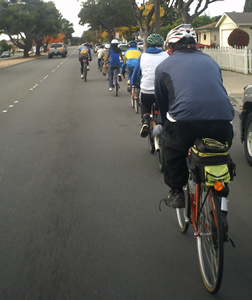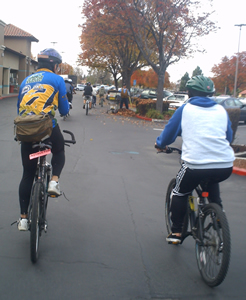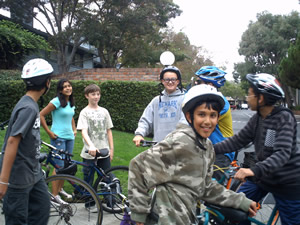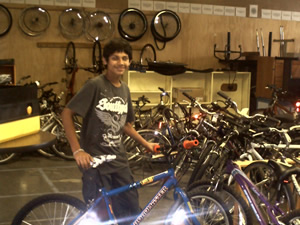
|
Club Member Spotlight Wynn Kageyama Wynn Kageyama is the club’s cycling education chair, level IV cycling instructor, and is hard to find on a club ride. He has Sunday school teaching adults (or whoever else would sign-up) effective cycling techniques in Castro Valley and sometimes in Fremont, or maybe even Dublin; or on some Saturdays with his colleagues at East Bay Bicycle Coalition working with adults in Oakland, Berkeley, or Alameda; or with Mark Dieter, science teacher at Newark Jr. High School. The two have introduced the 12-week Cycling! program to 7th and 8th graders. Recently he co-wrote a technical report with Michael Graff to Caltrans regarding the proposed Niles Canyon project(s) that failed to gain community support and sponsorship. His initial introduction to the project was to comment on bicycle transportation aspects. It became clear that Caltrans had not collaborated with the community early in the project and it came to as a surprise and upset the community. That project helped him to create contacts and become known within the county. Right now Wynn is working to launch pilot cycling projects that fits in school’s PE unit for grades 3-11. There are a number of hurdles to work through including acquiring permanent funding, and addressing everything that comes after that. The effort could be rewarding by training a full-time staff of cycling instructors to teach the material. It could be the beginning of a substantial cycling community starting from the ground up with kids knowing how to ride the roads properly.
The current program at Newark Junior High School shows policy makers what a program looks like. It lays out the justification of the community benefit to teach complete behaviors for traffic cycling in school. The results are encouraging by reducing accident rates by 70% for this age group by trading risky technique with correct behavior. His adult volunteers include Miguel Renteria, and Nick Marshall, and Irvington high school Quest volunteer Natalie MacDonald.
The Newark program concluded the fall program and will resume again when additional grant funding is provided. So what sort of tips could Wynn possibly provide you that you might find as a teachable moment? Maybe just a few tips and tricks that the most experienced members already know.
|



